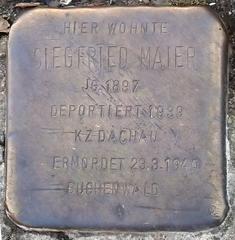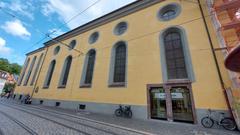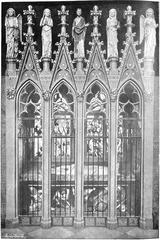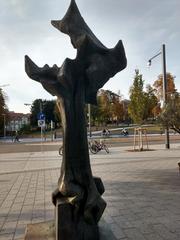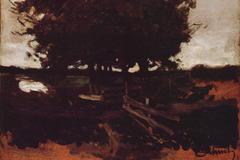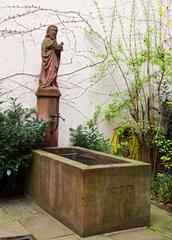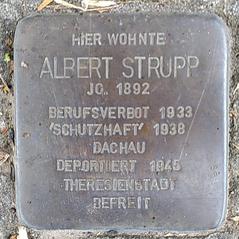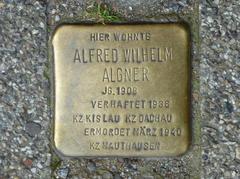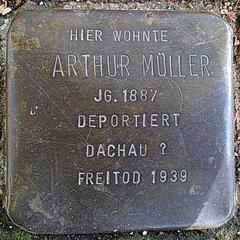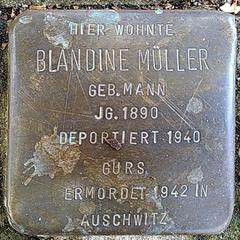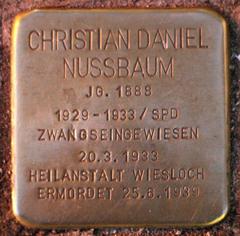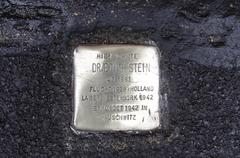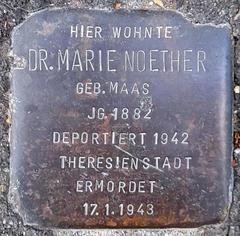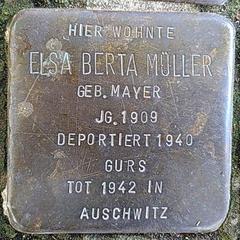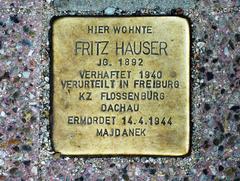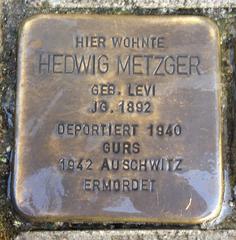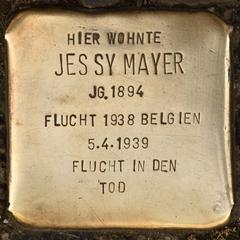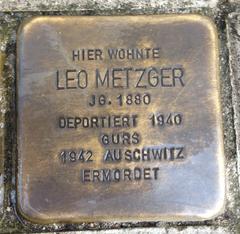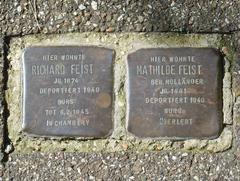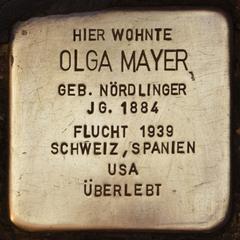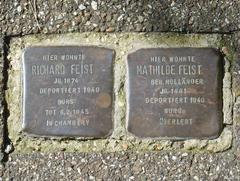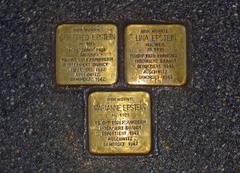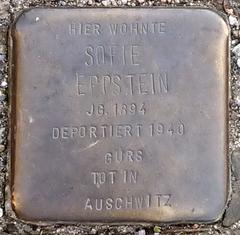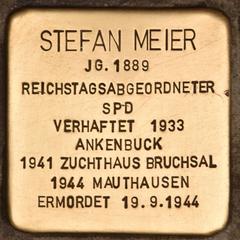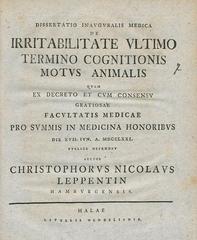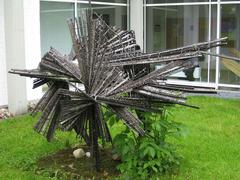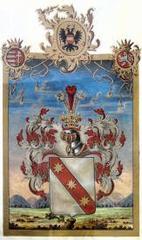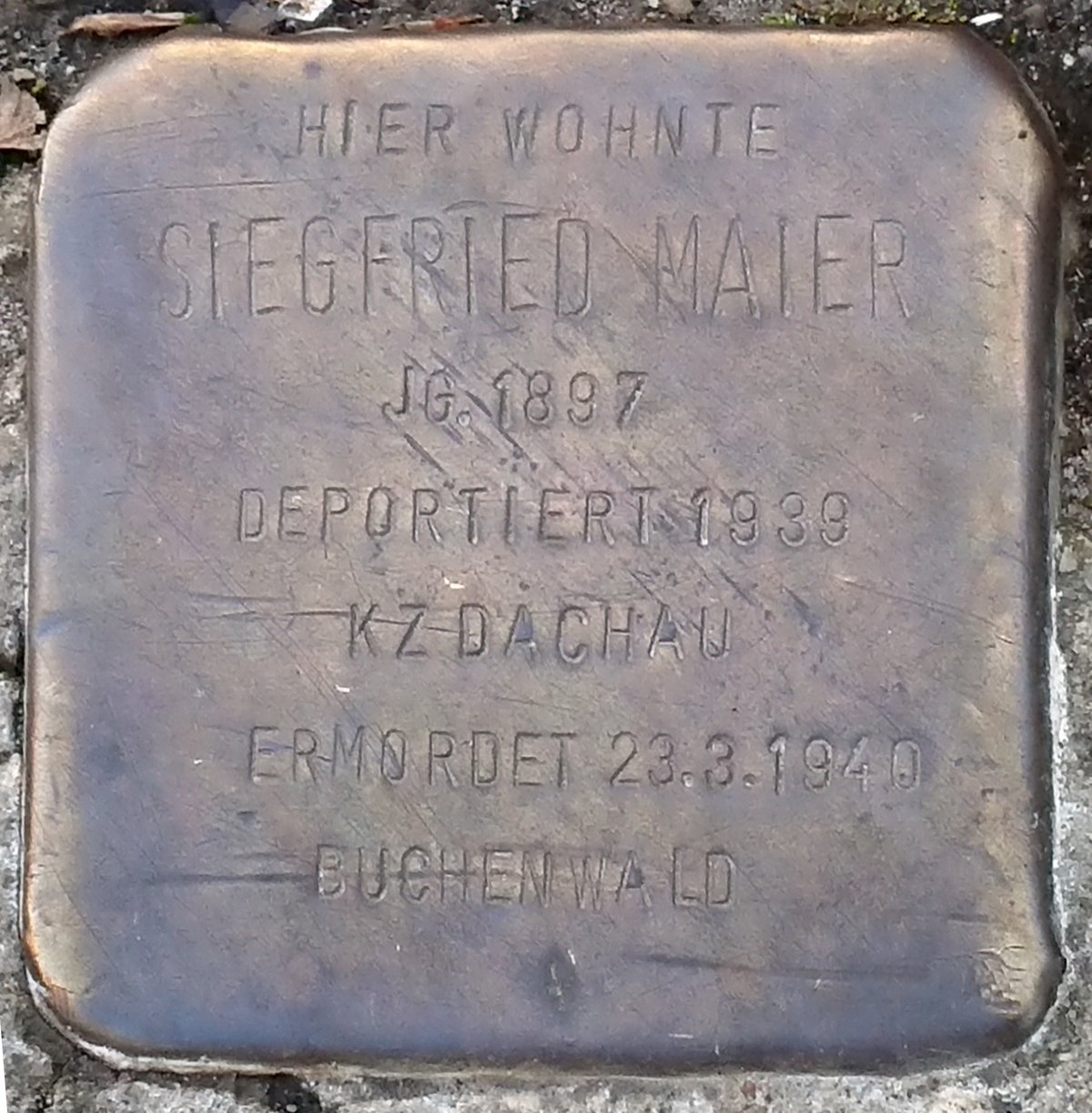
Stolperstein Siegfried Maier Freiburg: Visiting Hours, Tickets, and Historical Significance
Date: 14/06/2025
Introduction
In the heart of Freiburg im Breisgau’s Wiehre district lies a small yet profoundly meaningful memorial: the Stolperstein dedicated to Siegfried Maier. Stolpersteine (German for “stumbling stones”) are discreet brass plaques set into sidewalks, each commemorating an individual victim of Nazi persecution. Initiated in 1992 by artist Gunter Demnig, the Stolpersteine project has grown into the world’s largest decentralized Holocaust memorial, with over 75,000 stones placed across more than 1,200 cities (Wikipedia; Stolpersteine Freiburg).
This guide delves into the story of Siegfried Maier, the historical context of the Stolpersteine in Freiburg, and offers practical information for those wishing to visit this moving tribute. By exploring both the broader project and Maier’s personal fate, visitors can gain a deeper appreciation for the importance of remembrance and the lessons embedded in Freiburg’s streets.
Table of Contents
- The Stolpersteine Project: Origins and Purpose
- Siegfried Maier: Life and Persecution
- Visiting the Stolperstein: Location, Hours, and Accessibility
- Cultural and Memorial Significance
- Community Involvement and Education
- Visitor Tips and Etiquette
- Frequently Asked Questions (FAQ)
- Conclusion and Recommendations
- Sources
The Stolpersteine Project: Origins and Purpose
The Stolpersteine project, conceived by Gunter Demnig, places small concrete cubes topped with engraved brass plates into sidewalks at the last freely chosen residences of Nazi victims. Each stone bears the name, birth year, fate, and, if known, the date of death of the individual commemorated. The intent is to integrate remembrance into daily life, prompting passersby to “stumble” mentally over the memory of people once living among them (Wikipedia; denkmalprojekt.org).
Freiburg joined the project in 2002 and now features hundreds of Stolpersteine, each a silent witness to the city’s complex history and the devastating impact of National Socialism on its diverse communities (de.wikipedia.org).
Siegfried Maier: Life and Persecution
Siegfried Maier (also spelled Mayer), born February 13, 1881, in Müllheim, was a Jewish businessman whose experience mirrors those of countless victims of the Holocaust. Together with his wife Betty and daughter Ilse, he lived at several addresses in Freiburg, the last being Eisenbahnstraße 6 (now Rathausgasse 6) (Stolpersteine Freiburg).
Maier operated a delicatessen until 1939, but escalating Nazi persecution led to his arrest during the November Pogrom (Kristallnacht) in 1938. He was sent to Dachau concentration camp and, after release, was forced to relinquish his business through “Aryanization.” On October 22, 1940, Siegfried Maier was deported to Gurs internment camp in southern France, where he died, a fate shared by many Freiburg Jews (Stolpersteine Freiburg; Traces of War).
The Stolperstein for Siegfried Maier, set into the pavement at Rathausgasse 6, personalizes an otherwise abstract history and invites reflection on the consequences of intolerance.
Visiting the Stolperstein: Location, Hours, and Accessibility
Location
The Stolperstein for Siegfried Maier is located at Rathausgasse 6 in Freiburg’s city center—an address significant as his last freely chosen residence (Stolpersteine Freiburg). The site is within easy reach by public transport or on foot from Freiburg Hauptbahnhof.
Visiting Hours and Tickets
Stolpersteine are public memorials set into sidewalks and accessible at any time. There are no ticket fees or visiting hours; visitors are welcome to pause and reflect whenever they wish.
Accessibility
The memorial is at street level, and the surrounding sidewalks are generally accessible for all visitors, including those with mobility impairments. However, be aware that the area may include cobblestones, so suitable footwear is recommended.
Guided Tours and Nearby Sites
Guided tours of Freiburg’s Holocaust memorials, including the Stolpersteine, are available through local organizations and the Freiburg Tourist Information office (visit.freiburg.de). Combine your visit to the Stolperstein with other historical sites, such as the Freiburg Minster, Old Town, the former Gestapo headquarters, and the Jewish Cemetery.
Cultural and Memorial Significance
The Stolpersteine project transforms everyday urban space into a living memorial. Each stone is both a work of art and a historical marker, ensuring the stories of individuals like Siegfried Maier are not forgotten. The motto, “A person is only forgotten when their name is forgotten,” captures the project’s spirit of personalized remembrance (Stolpersteine Freiburg; Leo Baeck Institute).
Beyond their commemorative role, the Stolpersteine foster education and reflection, encouraging residents and visitors to engage actively with history as part of daily life.
Community Involvement and Education
The installation and ongoing care of Stolpersteine in Freiburg involve local historians, schools, and families of victims. Community events—such as installation ceremonies, annual cleanings, and public readings of victim names—transform remembrance into a living, participatory process (Stolpersteine Freiburg).
Educational programs often use the Stolpersteine as focal points for discussing the Holocaust, tolerance, and the responsibilities of memory.
Visitor Tips and Etiquette
- Pause and Reflect: Take a moment to read the inscription and consider the story it tells.
- Cleaning the Stones: Locals often clean the brass plates as a sign of respect.
- Leave Flowers or Stones: These traditional gestures honor the memory of the victim.
- Photography: Allowed, but please be considerate of residents and do not obstruct pathways.
Frequently Asked Questions (FAQ)
Q: Do I need a ticket to visit the Stolperstein for Siegfried Maier?
A: No, the Stolperstein is outdoors and free to visit.
Q: Are guided tours available?
A: Yes, check with the Freiburg Tourist Information office or local tour providers for current schedules (visit.freiburg.de; Historix-Tours).
Q: Is the Stolperstein site accessible for wheelchair users?
A: Yes, though nearby cobblestones may present minor challenges.
Q: Can I participate in community remembrance events?
A: Yes, events such as cleaning days and commemorations are open to all. See the Stolpersteine Freiburg website for announcements.
Conclusion and Recommendations
The Stolperstein for Siegfried Maier stands as a powerful, accessible memorial that connects Freiburg’s present to its complex past. By visiting this site, engaging with its history, and participating in community remembrance, visitors ensure that the stories of victims like Maier endure.
To enrich your experience, consider joining a guided tour, downloading the Audiala app for audio guides, and exploring other nearby historical landmarks. Above all, let your visit be a moment of reflection and a commitment to remembrance.
Sources
- Stolperstein (Wikipedia)
- Liste der Stolpersteine in Freiburg-Wiehre (Wikipedia, DE)
- Stumbling Stone Fedderstraße 6 (Traces of War)
- Siegfried Maier Stolperstein (Stolpersteine Freiburg)
- Freiburg Tourist Information
- Stolpersteine: Commemoration and Controversy (Leo Baeck Institute)
- Liste der Stolpersteine in Freiburg im Breisgau (Wikipedia, DE)
- Historix-Tours
- Audiala App
